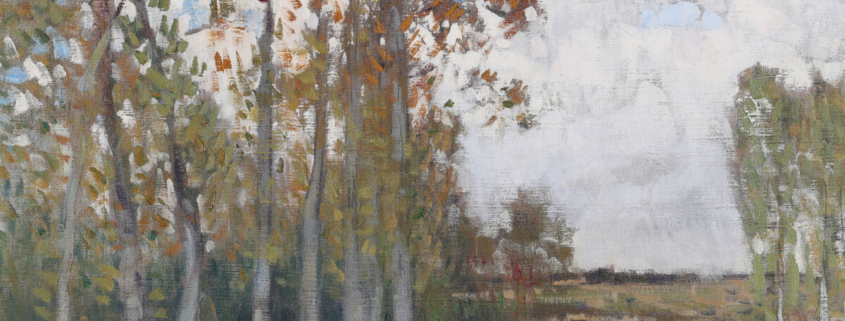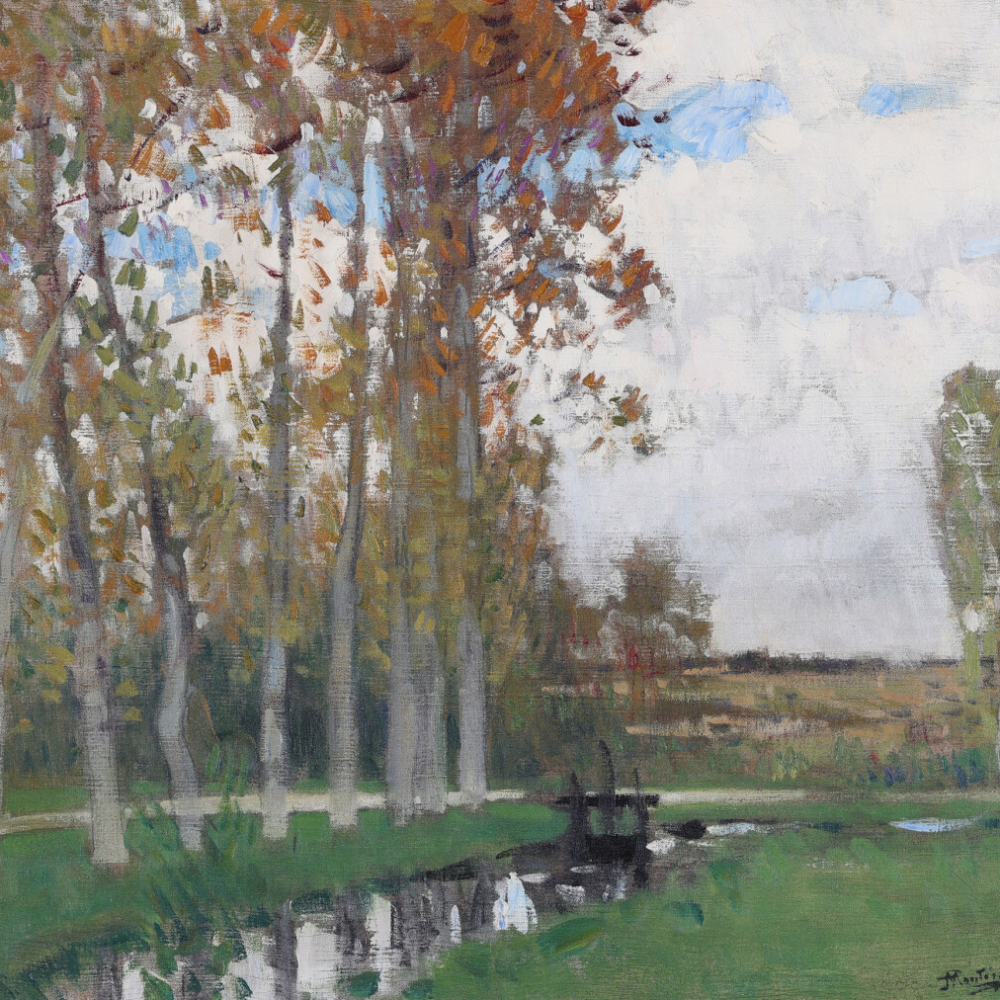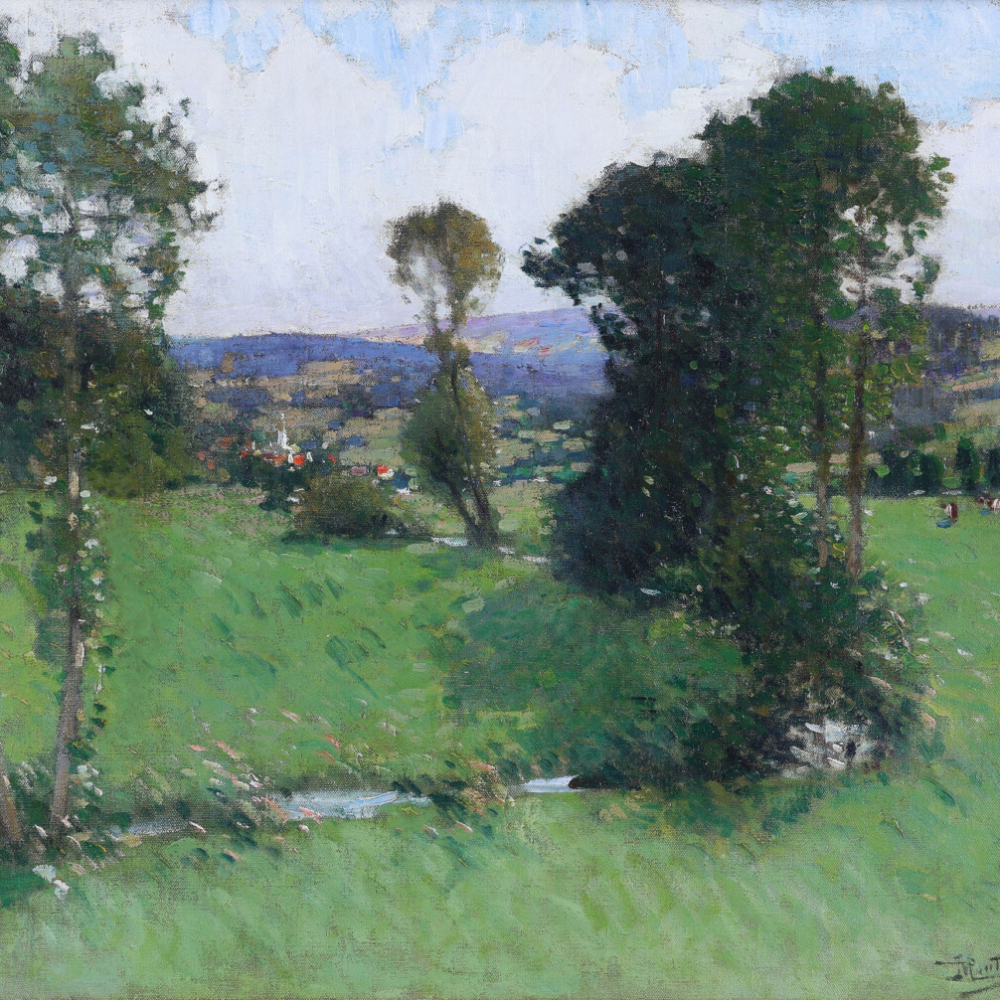
1874 – 1946
Although Pierre Eugène Montézin was a painter of landscapes, he spent most of his life in Paris. He loved the open air and the country areas of the Ile-de-France, yet he was born on a narrow street in the French capital. In his vigorous old age, still producing beautiful landscapes, he remarked to the famous French critic, Louis Vauxcelles, “The subjects of the landscape painter are less in front of the artist’s eyes, than in his heart.”
Pierre Eugène Montézin was born in 1874 in the very heart of Paris. His father was a lace artist, but also a lover of nature who took his young son on expeditions to the country. These trips were to have a profound effect on his later life and work
Pierre Montézin’s fatherfound him a job with a design company, where he soon devoted himself to murals. Strongly influenced by the theories of Impressionism, he later embarked on a career as an artist in his own right. In 1893 Montézin made up his mind to gain acceptance in the Salon. For ten years he painted ceaselessly and sent his work to the Salon but was regularly turned down. At last, he was accepted in 1903, winning a third-class medal in 1907 and a second-class medal in 1910and his career began in earnest.
In 1903 Montézin studied under the painter Ernest Quost (1844-1931) and it was Quost together with Montézin’s interest in the Impressionists that persuaded him to embark on this career as a painter. Quost made him work on his drawing and gave him a taste for painting.
He enlisted in 1914 for the duration of the war, receiving the Médaille Militaire after the battles of the Meuse. Upon his return he took up painting again. He lived in Dreux and Moret for a year and spent his holidays there from then on. His paintings concentrated on the rivers, villages, and agricultural scenes of the region. Montézin spent very little time in his studio; he could really work only from nature.
Montézin began to win honours as early as 1920 when he received the Rosa Bonheur Prize. He was made a Chevalier of the Légion d’Honneur in 1923 Critical reaction to this nomination was explosive. For thirty years no landscape painter had received the Medal of Honor which, since 1897, had been awarded only to figure painters and painters of compositions. For three decades landscapes had been considered a minor form of painting, a fact which made Montézin’s triumph all the more exceptional. In 1932 he received the Medal of Honor at the Salon des Artistes Français and was also elected the president of the Salon jury. The same year he had a great exhibition in Paris to which the public flocked. 237 canvases were shown, all landscapes, and similar successful exhibitions in Paris followed in 1936, 1938 and 1943. Montézin’s painting was well-received, his technique – a distant descendant of Impressionism – captivating many by its virtuosity.
In 1940 he was elected a member of the Académie des Beaux-Arts, taking the place left vacant by Edouard Vuillard’s death.
Montézin painted to the end of his long life, dying suddenly in 1946 while he was painting during a trip to Brittany.
Museum and Gallery Holdings
Mannheim (Städtische Kunsthalle): Flowers
Paris (MAMVP): Making Hay in Normandy (1940)
Paris (Mus. du Petit Palais): Poplar Trees
Click on the images below to view and purchase our paintings by Pierre Eugène Montézin…
- Display 24 Products per page


